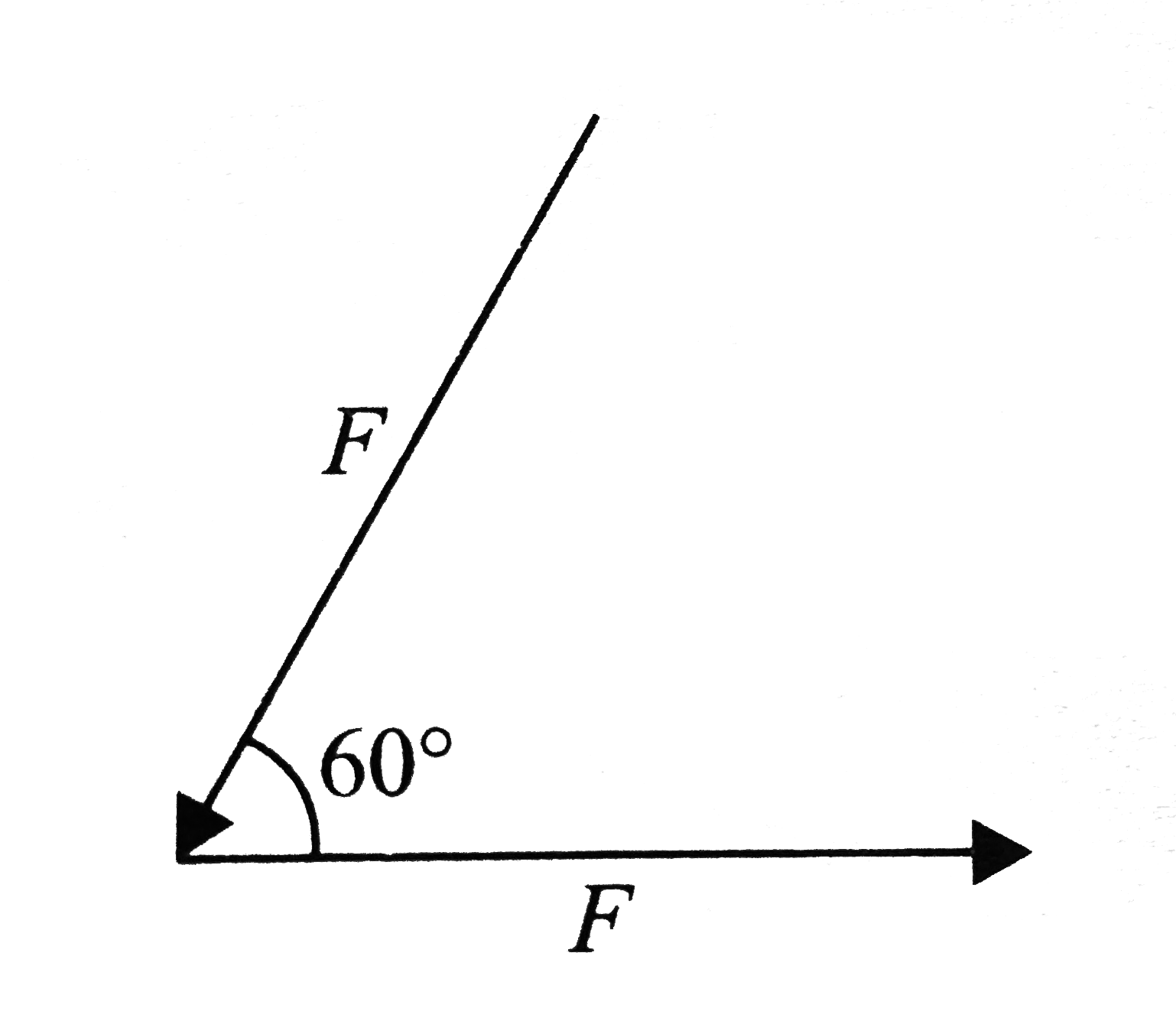At what angle should the two force vector 2F and √2F act so that the resultant force is √10F?
45∘
60∘
90∘
120∘
The correct Answer is:A
To solve the problem of finding the angle at which the two force vectors 2F and √2F should act so that their resultant is √10F, we can follow these steps:
Step 1: Understand the Problem
We have two force vectors:
- →A=2F
- →B=√2F
We need to find the angle θ between these two vectors such that the magnitude of their resultant R is √10F.
Step 2: Use the Formula for Resultant of Two Vectors
The magnitude of the resultant R of two vectors can be calculated using the formula:
R=√A2+B2+2ABcosθ
Substituting the values of A and B:
R=√(2F)2+(√2F)2+2(2F)(√2F)cosθ
Step 3: Substitute the Values
Calculating A2 and B2:
(2F)2=4F2
(√2F)2=2F2
Thus, we have:
R=√4F2+2F2+2(2F)(√2F)cosθ
This simplifies to:
R=√6F2+4√2F2cosθ
Step 4: Set Up the Equation
We know that the resultant R is equal to √10F:
√6F2+4√2F2cosθ=√10F
Step 5: Square Both Sides
Squaring both sides to eliminate the square root gives:
6F2+4√2F2cosθ=10F2
Step 6: Rearrange the Equation
Rearranging the equation:
4√2F2cosθ=10F2−6F2
4√2F2cosθ=4F2
Step 7: Simplify
Dividing both sides by 4F2 (assuming F≠0):
√2cosθ=1
Step 8: Solve for cosθ
cosθ=1√2
Step 9: Find the Angle
The angle θ can be found using the inverse cosine function:
θ=cos−1(1√2)=45∘
Conclusion
Thus, the angle at which the two force vectors 2F and √2F should act to achieve a resultant of √10F is 45∘.
---
We have two force vectors:
- →A=2F
- →B=√2F
The magnitude of the resultant R of two vectors can be calculated using the formula:
R=√A2+B2+2ABcosθ
Substituting the values of A and B:
R=√(2F)2+(√2F)2+2(2F)(√2F)cosθ
Calculating A2 and B2:
(2F)2=4F2
(√2F)2=2F2
Thus, we have:
R=√4F2+2F2+2(2F)(√2F)cosθ
This simplifies to:
R=√6F2+4√2F2cosθ
We know that the resultant R is equal to √10F:
√6F2+4√2F2cosθ=√10F
Squaring both sides to eliminate the square root gives:
6F2+4√2F2cosθ=10F2
Rearranging the equation:
4√2F2cosθ=10F2−6F2
4√2F2cosθ=4F2
Dividing both sides by 4F2 (assuming F≠0):
√2cosθ=1
cosθ=1√2
The angle θ can be found using the inverse cosine function:
θ=cos−1(1√2)=45∘
Thus, the angle at which the two force vectors 2F and √2F should act to achieve a resultant of √10F is 45∘.
Topper's Solved these Questions
Similar Questions
At what angle should the forces 2P and √2 act so that the resultant fforce is p√10
View SolutionAt what angle must the two forces (x+y) and (x−y) act so that the resultant may be √x2+y2
View SolutionAt what angle must the two forces (x+y) and (x-y) act so that the resultant may be √x2+y2 ?
View SolutionThere are two forces vector,one of 5N and other of 2N. At what angle should the two vector be added to get the resultant vector of 17N, 7N,and 13N respectively?
View SolutionThe resultant of two forces 2 N and 3 N is √19 N. The angle between the forces is
View SolutionTwo forces, each equal to F, act as shown in (figure) Their resultant is
 View Solution
View SolutionThe resultant of two forces 2 N and 3 N is √19 N. The angle between the forces is
View SolutionAt what angle the two force →A+→B and →A−→B act so that their resultant is √3A2+B2 ?
View SolutionAssertion:− when two non parallel forces F1 and F2 act on a body. The magnitude of the resultant force acting on the is less than the sum of F1 and F2
Reason:− In a triangle, any side is less then the sum of the other two sides.View SolutionA Force F acts on a body and displaces it by a distance S in direction at an angle θ with the direction of force ,(a) Write the expression for the work done by the force,(b)What should be the angle between the force and displacement so that the work done is (i)zero ,(ii)Maximum ?
View Solution

